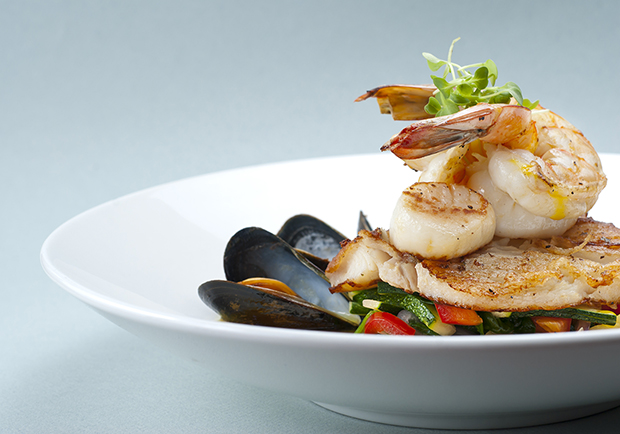Why You Should Include Fish in Your Diet—and Which Types Are Best
Loaded with essential nutrients, fish is an important part of your diet. Learn what types are best and get some easy recipes to incorporate this heart-healthy protein into everyday meals.

You’ve likely heard the old proverb, “Give a man a fish and you feed him for a day; teach a man to fish and you feed him for a lifetime.” And while this is usually referring to being self-sustaining, we believe it should be applied to your dietary guidelines too.
Fish has a positive effect on your heart health. Having one or two servings of omega-3 rich fish (we’ll talk about these later) will cut your risk of heart attack by one-third, compared to those who eat fish less than once a month or don’t eat it at all.
Fish is much lower in calories and saturated fat than other meats that people typically consume as a source of protein. The iron in fish is also easier for the body to absorb than iron found in plants. Fish is a great source of essential nutrients your body needs such as vitamins A, B, and D, iodine, selenium, and zinc.
Related: 7 Foods Packed with Vitamin C
But not all fish are created equal. There are certain fish you should limit, and others you should make part of your weekly menu. Fish that you should avoid or limit in your diet because they can be high in mercury include: swordfish, tilefish, king mackerel, farmed eel, bluefin tuna, and orange roughy.
Here are the fish (or other seafood) that are the healthiest for you:
Salmon
This delicious fish is popular for a reason—it’s a good source of protein, fatty acids, vitamins A, B, and D, and minerals such as calcium and iron.
Trout
As one of the easiest fish to get fresh, trout has a lot of protein, vitamin B12, potassium, and omega-3 acids, which can help reduce inflammation in the body.
Tuna
Considered heart-healthy fish for a reason, tuna has high levels of omega-3 fatty acids, which can improve cholesterol and reduce blood pressure.
Tuna can be high in mercury, so pregnant women and children should avoid it; lighter varieties of tuna are a safer option.
Oysters or clams
Oysters are a good source of protein, vitamins, and minerals, and are particularly high in zinc, which can help boost our immune system. This seafood is low enough in mercury that you can eat it up to three times a week.
Sardines
They may be tiny and low in calories, but they’re packed with nutrients like selenium, omega 3 fatty acids, and vitamins D, B12, and B2. Opt for the low-sodium variety if you’re trying to control your sodium intake.
Shrimp
Low in fat and high in iodine, shrimp can be a healthy and nutritious addition to stir fries, salads, or served on its own as a light appetizer.
Crab
While technically in the shellfish group, crab has a lot of protein, vitamin B12, and vitamin C.
Related: Grilled Scallops with Mango Chile Relish
Knowing seafood is healthy for you and you should eat it is one thing, but preparing it is another. Seafood can be labor intensive to prepare. Try these simple recipes to start incorporating seafood into your diet.
- Make these easy-peasy fish tacos
- Go super healthy with this Roasted Salmon with Kale-Quinoa Salad
- Keep it classic with this 20-minute shrimp stir-fry
- Whip up this tuna salad sandwich for a quick, healthy lunch
Adding more fish to your diet doesn’t have to be hard. Start by swapping one meat a week with fish and soon you’ll have a whole list of new recipes you love.
Reference: organicfacts.net/salmon.html
